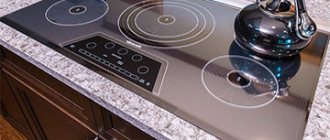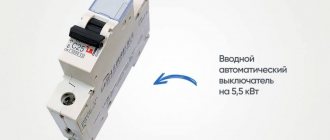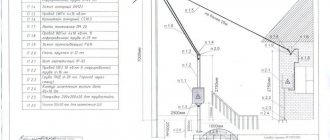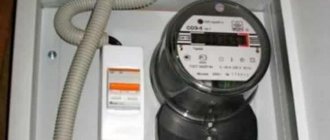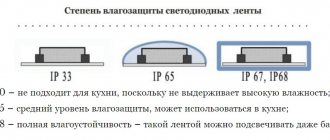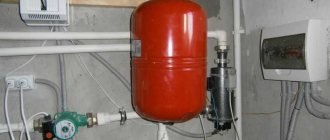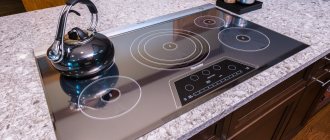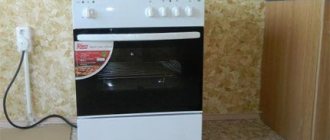An induction hob is one of the most modern options for kitchen appliances. It is considered not only safe, but also beneficial to use. Although, despite its efficiency, the power of the stove is quite high.
Induction panels are more efficient than electric stoves, but help save energy. You can understand how this happens by considering not only the indicators of different types of equipment, but also the principles of their operation.
What is an induction heating stove?
The induction hob design is significantly different from conventional gas or electric hobs. The difference lies in the operation of the heating elements. A special feature of the device is the absence of a spiral, which was heated by the passage of electrical or thermal energy.
The induction hob design is significantly different from conventional gas or electric hobs.
Heating occurs through the formation of a powerful bunch of electromagnetic waves, which propagate through the metal and stimulate heating processes. The resulting heat is transferred to the dishes and food. This approach allows you to intelligently use energy for its intended purpose, which allows you to save significantly.
Heating occurs through the formation of a powerful bunch of electromagnetic waves, which propagate through the metal and stimulate heating processes.
Please note that not all cookware is suitable for use on an induction cooker. Such containers must have increased density and transmit electromagnetic waves. Typically steel utensils are used.
Please note that not all cookware is suitable for use on an induction cooker.
Design and principle of operation
To understand how much electricity an induction cooker consumes, you need to understand its structure and operating principles. Due to the special heating method, the device gained popularity in the market in a fairly short time. The heating process occurs by transmitting magnetic pulses generated by an electromagnetic field. It, in turn, arises through the passage of electric current.
To understand how much electricity an induction cooker consumes, you need to understand its structure and operating principles.
Traditionally, the heating surface of such a device consists of the following structural elements:
- control panels;
- main part (body);
- power plants;
- temperature sensor.
The peculiarity of this design is that the heating pulse is directed. This means that energy is not dissipated, but only heats the food in the pan. The surrounding objects remain cold.
Additional Information. This is a great option if you have a small child. Now he will not get burned by accident if he touches the surface of the stove. You no longer need to keep dangerous matches in your house.
Note! If you use an induction cooker, you will have to purchase new cookware. They must have the required magnetic penetration coefficient. The best option is ferromagnetic products.
Another innovative solution is that there is no need to install a heating coil. This approach reduced the amount of energy and increased system reliability.
Another innovative solution is that there is no need to install a heating coil.
The tile is a cooking surface in the form of a transformer. The induction coil is located immediately below it. The second element for the operation of the electromagnetic field will be the dishes that you place on the surface.
The second element for the operation of the electromagnetic field will be the dishes that you place on the surface.
The device is constantly connected to the network. Heating occurs only at the moment when the corresponding container is placed on the burner. The principle of operation is as follows - alternating current passes through the coil and forms an electromagnetic field, which is transmitted to the bottom of the dish. Under its influence, the surface begins to heat up to the desired temperature. Food is cooked using heat currents that are spread by a heating magnetic field.
Food is cooked using heat currents that are spread by a heating magnetic field.
This method is characterized by low energy consumption. All heat is directed exclusively to the target container, allowing you to cook food much faster. At the same time, the power of induction cookers in kW is 3.5, which is much lower than that of conventional gas or electric appliances.
All heat is directed exclusively to the target container, allowing you to cook food much faster.
To control the entire cooking process, there is a control panel on top. With its help, the presence of capacity on the surface is determined, and the optimal power level is established based on the obtained characteristics.
To control the entire cooking process, there is a control panel on top.
Harmful radiation
Many housewives are afraid of the harmful electromagnetic radiation that all induction cookers have.
There is definitely radiation. However, it does not have a harmful effect on you, even if you put your head to the stove itself. You are not a cyborg with an iron brain to create eddy currents.
With normal use of the panel, when you cook food at a distance of 20-30cm from its surface, no negative effects occur either.
At a distance of up to 10 cm from the stove, the intensity of the electromagnetic field is about 140 Volts/meter. At a distance of up to 0.5 m it drops to 15 V/m. Here are the acceptable values for this indicator:
Some people mistakenly compare induction cookers to a microwave. But there are completely different frequencies. The microwave contains microwaves (ultra high frequencies), which cause resonance of water molecules. Their friction causes the water to boil. And our body, including the brain, consists of water.
However, we still use microwave ovens. Induction cookers are much safer in this regard.
Measurements were even taken and it turned out that the electric magnetic field near the stove is tens of times less than near an electric hair dryer, which you regularly dry your hair with and bring directly to your head.
However, sick people who wear special pacemakers need to be very careful.
The electromagnetic field of the stove, under certain conditions, is quite capable of damaging such a device. Therefore, in order not to take risks, the instructions usually state that people with similar diseases should be at least 30 cm away from the surface of the panel.
But this is standard reinsurance for manufacturers of such equipment. Some instructions for microwave ovens in the USA even indicate that wet cats should not be dried in them.
Also, do not forget about bank cards and magnetic passes. They should not be brought too close to the stove during cooking, as they may become demagnetized.
Energy consumption and power of an induction hob
Knowing the principle of operation, you can determine how much electricity an induction cooker consumes. This indicator depends on the design features of each manufacturer’s devices. If we name the average indicator, then it should not exceed two kW per hour for one burner. To many, this figure may seem quite large. Moreover, most stoves have from two to four burners. That is, electricity consumption, at first glance, is quite high. Let's figure out how you can save money with such a device.
Knowing the principle of operation, you can determine how much electricity an induction cooker consumes.
In terms of productivity, the efficiency of an induction cooker reaches ninety percent. This result can be achieved by directed heating of the surface of the cookware. This makes it possible to heat food or water much faster than on other types of stoves, which indicates high energy levels.
This makes it possible to heat food or water much faster than on other types of stoves, which indicates high energy levels.
For example, if you heat water on an induction stove, you will spend six minutes on it, but on a regular stove it will take up to thirty. This is a significant difference. Now you can evaluate how beneficial it is to use induction panels. They allow you to reduce cooking time by almost five times. If you know how much energy your induction cooker uses, you can save a lot of money on your energy bills.
For example, if you heat water on an induction stove, you will spend six minutes on it, but on a regular stove it will take up to thirty.
Inertia
What is this indicator and what does it mean? Inertia is the time of heat retention after a power outage. Roughly speaking, how long does it take for the panel to cool down?
In some cases, food requires a certain time during the cooking process to “reach” the desired consistency - the simmering effect.
And here this same inertia will come in handy. If you reduce the temperature on an electric stove or turn it off completely, it will not cool down immediately.
In this regard, induction is closer to gas. I turned it off and the temperature immediately dropped. This is especially useful when something boils or “runs away” from the pan, and you need to instantly reduce the temperature. Here, excessive inertia seems to be a problem.
To create the effect of inertia, the induction cooker has a pulsed simmer mode. That is, on “low heat” the low boiling power is regulated something like this: it heats for 3 seconds, not for 3 seconds.
At this time, the water will either boil or cool, which is not very convenient and will give an unpredictable cooking result. The problem is partly solved by using dishes with a thick multi-layer bottom.
Based on the above, it is impossible to give an unambiguous answer to the question of which type of slab is better and which is worse in terms of inertia. Each housewife decides for herself.
Advantages and disadvantages of induction hobs
Based on the above, we can highlight the following advantages of induction cookers:
- high cooking speed;
- the panel can be built into the design of a regular table;
- characterized by a high heating rate of the working surface;
- the presence of dishes on the surface is determined automatically due to sensors built into the device;
- heating is directed exclusively at the dishes and contents - all other objects nearby remain cold;
- any model of induction cooker is characterized by high efficiency, so you should not look at the power indicators of equipment from different manufacturers;
- a wide range of different functions, which allows you to significantly simplify the cooking process and realize many culinary ideas;
- ease of maintenance - the surface is very easy to clean with special products;
- safety - you definitely won’t get burned or injured, there is no chance of a fire;
- modern and simple design that will fit into any interior and become its decoration;
- power increases or decreases smoothly in automatic mode, which occurs thanks to installed sensors.
Despite the fact that induction cookers are innovative equipment with many advantages, you should be aware of some of their disadvantages:
- You can only use special utensils made of ferromagnetic materials;
- The cooling system makes a lot of noise during operation, which can be disturbing.
Differences between induction and electric cooker
Let's figure out how different the equipment is. The main difference between the devices is the principle of their operation. The electric stove first heats up, after which the dishes and food are heated. An induction cooker only heats the cookware, but remains cold.
An induction cooker only heats the cookware, but remains cold.
For an electric device, the type of cookware does not matter, but for an induction panel you will have to use special kitchen utensils. In this case, the second option is safer, since the surface remains completely cold. Also, the induction cooker heats up exactly as much as necessary so as not to overuse energy. This is a more economical solution with many advantages.
For an electric device, the type of cookware does not matter, but for an induction panel you will have to use special kitchen utensils.
Ease of use
Both types of appliances are much more convenient than gas stoves, but they work differently.
The electrical panel first becomes hot itself, and then heats the dishes: this happens thanks to the thermal energy transmitted by the conductor. For cooking, you can use dishes made of a variety of materials, but always with a flat and thick bottom, the diameter of which must match the size of the burner (this will help avoid heat loss). The induction surface heats the cookware and its contents, and the diameter of the bottom does not matter - the main thing is that the material is magnetized. Cast iron and enameled pans with a completely flat bottom, as well as stainless steel containers, are suitable. Both types of panels, unlike gas panels, operate quite quietly. But if an electric stove is absolutely silent, then an induction stove makes specific sounds when the cooling fans are turned on. According to user reviews, you quickly get used to them and stop noticing them.
Electric and induction devices come in a variety of sizes, which allows them to be integrated into any kitchen set. The first type of product can have from two to five burners, and the second - from one to six. Control can be either touch or mechanical.
Electricity consumption of electric stove burners
Depending on the size, the cooking mode and energy consumption differ:
- small – power does not exceed 1 kW, which is suitable for slow cooking;
- medium – power reaches 2 kW, which allows you to prepare soups and other dishes;
- powerful - power reaches 3 kW, intended for large containers.
The most popular induction hobs
On the modern market there are induction cookers from different manufacturers. Below is a comparison of the most popular options.
On the modern market there are induction cookers from different manufacturers.
Siemens
Equipped with five burners. Some of them independently adjust to the type of cookware. Equipped with a convenient control panel and temperature sensors. There is a residual temperature sensor that retains heat for a long time.
There is a residual temperature sensor that retains heat for a long time.
Bosch
Panel with four burners. They can be combined to increase the usable cooking area. There is a function that allows you to increase the power of an individual burner by up to fifty percent.
There is a function that allows you to increase the power of an individual burner by up to fifty percent.
Zanussi
Budget option with multifunctional burners. It features simple design and controls. The device is characterized by reliability and safety.
Budget option with multifunctional burners.
Maunfeld
One of the best devices in terms of price-quality ratio. The induction hob is equipped with rich functionality. There is a child lock and automatic shut-off in case of water spills.
One of the best devices in terms of price-quality ratio.
Hansa
A full-size stove, reminiscent of traditional models. It is a combination of a hob and an electric oven. The equipment is highly efficient and productive. Induction cookers are modern solutions for cooking. They fit perfectly into the kitchen interior, have wide functionality and high efficiency.
A full-size stove, reminiscent of traditional models.
Features worth paying attention to
How economical a kitchen stove is is the question that primarily worries the owner of the house. The housewife, who has to stand at this same stove every day, is more interested in the capabilities of the latter, its functionality. Modern induction hobs can do a lot; we will consider only some of their functions, which, from our point of view, should be paid special attention to when choosing equipment.
Heating degree adjustment ranges
One of the main disadvantages of conventional electric stoves is the inability to smoothly regulate the degree of heating of the burners. Induction panels, alas, also lack smooth adjustment, but the problem is almost completely eliminated due to the presence of a large number of temperature modes.
In some expensive models, their number can reach 20. However, as the experience of those who have used such stoves shows, 20 modes is clearly too much. So that when preparing food you do not have difficulties setting the required temperature, we recommend that you give preference to hobs that have at least 14 power modes. 16 modes will be enough for even the most demanding housewife.
Booster
In many models of induction panels, adjacent coils are interconnected and, if necessary, can “share” their power with each other. When a function called Booster is activated (in some models this may be PowerBoost or Power), the heating power of one burner increases for a short time at the expense of the other.
The power of the “fed” burner usually increases to 2.5-3.5 kW, and in some models even up to 4.5 kW. Booster is usually used in cases where you need to quickly bring a large volume of water to a boil.
Fast start
Thanks to the use of a fundamentally different heating method, induction panels are more economical than other household stoves. At the same time, they save not only electricity, but also your time. The automatic boiling function will allow you to further reduce the cooking time.
If the housewife, before choosing the mode in which the dish is to be cooked, activates this function, the burner will start working at maximum power, trying to bring the water in the pan to a boil. When this goal is achieved, it will automatically switch to the initially set cooking mode. None of us wants to spend all our free time in the kitchen, and the automatic boiling function will relieve us of this need as much as possible.
Keep warm mode
The function of keeping food warm is very popular among many housewives, but, oddly enough, it is not found on all induction panels.
This function allows you to maintain the temperature of the contents of the pot or frying pan at the level of 60-70°C, which means that by the time the family members finally deign to gather at the dinner table, the finished dish will not burn or dry out.
Timer
Not long ago, a timer on kitchen stoves was a rarity. I must say, this is quite strange: firstly, this function is in great demand among buyers, and secondly, its implementation is quite simple from a technical point of view and does not require serious efforts on the part of manufacturers.
Today the situation has changed: timers can be seen, if not on all, then at least on most manufactured induction panels.
This function can be implemented in different ways.
1. The simplest option is an alarm clock that, at the end of the allotted time, gives a sound signal, which should remind the housewife that it is time to appear at the stove.
2. A more serious option - a timer with automatic shutdown. This will itself give a command to stop heating when the time specified by the user has expired. In the most “advanced” models of induction cookers, a switch-off timer allows you to set the duration of operation not of the entire panel, but of each heating zone separately.
Some manufacturers have begun installing Eco timers on their induction hobs, designed to save energy: Eco will turn off the heating a little earlier than the appointed time, which allows you to make the most of the residual heat.
Safety shutdown
The safety shutdown function will help prevent damage to the hob as a result of overheating. When a signal is received from the temperature sensors that the permissible temperature value has been exceeded, the cooling fan will automatically turn on.
If this measure is not enough, the system will be forced to turn off the operating burners. When the temperature reaches an acceptable level, the automation will restore the process with the previous settings.
Control lock
Locking the buttons on the control panel of the device, popularly called “child protection”, which more accurately reflects its purpose, is in high demand among buyers whose families have children of preschool age.
This function will not allow uninvited “helpers” to turn on the stove or change the settings of the mode set by the mother.
Power limitation
If the wiring in your apartment is old and therefore not designed for heavy loads, you can limit the maximum power of the induction panel. This does not mean that you will have to work on a “half-dead” stove that is unable to boil water in a pan.
In this case, you will be able to fully use the burners, but not all, but only two out of four. This function can only be activated from time to time, for example, when other high-power household appliances are operating simultaneously with the induction hob.
Pause
The Stop&Go function allows you to pause the cooking process for a few minutes by turning the burners to the minimum power level. The pause will give the housewife the opportunity to leave the kitchen for a while and not worry about a dish that requires increased attention.
Of course, you could simply turn off the stove by removing the pan from it, and then turn it back on when you return. However, in this case it would be necessary to enter all the settings again. With Stop&Go there is no need for this: when the function is deactivated, the induction hob will immediately start working in the previously set mode.
Another function for pausing the process – Cleaning pause – has not yet gained any particular interest among buyers or widespread distribution. The Cleaning pause is designed to briefly turn off heating for 30 seconds and lock the control panel buttons, which gives the user the opportunity to wipe the panel - to collect, for example, spilled liquid or spilled cereal.
Operating principle and power consumption
Any of us understands how an electric or gas stove works. With induction everything is not so clear. This kitchen unit went on sale relatively recently, and there are still many household myths around it.
How does an induction cooker work?
The induction surface cooks using electromagnetic induction. This physical phenomenon allows metal utensils to be heated by eddy currents.
The hotplate only turns on if a suitable pan is placed on it. And turns off as soon as it becomes empty. Copper coils are located under the electronically controlled glass-ceramic panel.
Energy consumption
When buying equipment for your home, the first thing you should think about is saving energy. The energy consumption of induction and electric cookers is approximately the same. The average value is about 7 kilowatts per hour. This figure may vary depending on the number of burners and their size. However, an induction panel heats the same volume of water five times faster than a heating element electric stove of the same power.
In addition, the induction hob stops heating as soon as you remove the dishes and does not heat itself or the air around it. Having assessed these factors, we can say that the induction model is much more economical than the electric one.
Possibility of power adjustment
The power of the induction cooker is adjusted by sequential switching on and off. During cooking, the power can be changed. Also in some models it is possible to set the required heating temperature on the control panel.
How to achieve energy saving
The issue of saving has been and will be the dominant one when choosing household appliances for the home. Each of us wants to have minimal costs and maximum benefits. When choosing induction panels in comparison with other types of stoves, the high power consumption of panels of this type and control of energy consumption (example of a model with the “Boost” function) play into their hands. An induction electric hob in itself saves your budget through the correct distribution of technical loads. So it’s easy to achieve energy saving, just buy an induction hob.
Pros and cons of an induction cooker
To finally decide whether it is worth buying an induction cooker, you need to consider all its pros and cons.
Advantages:
- Economical. An induction cooker heats the cookware directly. Heating occurs very quickly. There is no loss of thermal energy to heating elements and air. It turns off immediately when you remove the dishes. All this together leads to significant energy savings.
- Safety. The hob cools down almost instantly, making it impossible to get burned on it. This is very important for those who have small children.
- Easy to clean. Since the panel itself remains cool, food does not stick to it. Any dirt can be easily removed with a damp cloth. This property also protects against the unpleasant smell of burning.
- More possibilities . Induction cookers are equipped with a large number of programs by adjusting power and temperature. This makes the cooking process very convenient.
Flaws:
- Special dishes. Induction cooking requires pots and pans made of ferromagnetic material. In principle, this can be any container that attracts a magnet, but when using non-specialized dishes, the device may not work correctly or produce an unpleasant hum if the bottom of the pan is uneven.
- Magnetic radiation. The strength of electromagnetic radiation generated by the stove affects humans and other devices. In general, this is not as dangerous as it might seem. However, it is not recommended to install induction appliances at a distance of less than 50 cm from other electrical appliances. People with pacemakers are prohibited from cooking on this stove. Near the induction panel, bank cards may become demagnetized and mobile phones may be damaged.
- Price and repair. The choice of induction cookers is much smaller than that of heating elements, and their price is higher. Repairing a panel with a coil is also more expensive, and there are much fewer craftsmen capable of performing it.
Which one is better to choose?
The induction hob does not require extensive maintenance; it gets dirty less and is easier to clean. But the cost is many times more expensive than electric, and you need special cookware with a thick bottom. But the cooking time will be reduced by 2 times due to high efficiency, and the price will pay off within 1 year due to the saved electricity. In terms of safety, glass-ceramic is much inferior to induction.
Only people who have pacemakers are at risk. Induction does not in any way affect the quality of the food being prepared.
When choosing a stove, you should also pay attention to the manufacturer and the class of electricity consumed. Induction cookers are becoming increasingly popular in Russian markets, as they have fewer disadvantages compared to their competitors. But the choice is yours!
All installation work must be performed only by a qualified technician.
Electricity consumption
An induction hob burner consumes an average of 1.5 kW of electricity per hour. Water in a five-liter saucepan boils in 6 minutes. To cook pasta, you will need to boil water and cook for 10 minutes.
This is exactly the amount of electricity needed to cook pasta on an electromagnetic stove:
- 10 min. + 6 min. = 16 min.;
- 1.5 kW/h: 60 min. = 0.025 kW/min;
- 16 min. x 0.025 kW/min. = 0.4 kW.
The price per kW of electricity in the central region of Russia averages 4 rubles.
0.4 kW x 4 rub. = 1.6 rubles - this is the amount you will spend on preparing pasta.
It is quite difficult to calculate how much electricity a particular family will consume. However, using this formula, you can do it yourself. We will try to give an average value.
Let's say you cook 2 dishes 3 times a day, each for 15–20 minutes:
- 20 minutes. x 0.025 kW/min. = 0.5 kW;
- 0.5 kW x 2 x 3 = 3 kW (per day);
- 3 kW x 30 = 90 kW (per month);
- 90 kW x 4 rub. = 360 rub.
Oven socket
Many people have a question: is it possible to connect an electric oven from an existing regular outlet that was previously installed in the kitchen for a kettle, microwave, etc.?
It is possible, the main thing is that 3 conditions are met:
the oven must have a power of no more than 3.5 kW
The socket is connected with a three-core copper cable from the panel with a cross-section of at least 2.5 mm2
in the electrical panel, replace a conventional circuit breaker with a thermal release with a differential circuit breaker with a rated current of no more than 16A
If you replace the only circuit breaker for sockets with a differential 16A one and connect the oven through it, it will be practically impossible to use other electrical appliances while the oven is working and food is being prepared.
Here you will have to make your own choice, either in favor of saving (not installing new wiring, a separate outlet, etc.), or in favor of comfort and convenience. It is not recommended to leave a regular modular machine in the panel without protection against leakage currents when connecting the oven to an old outlet.
The height of installation of a new socket under the oven should be no more than 90cm from the floor. Although it is also often placed at the level of the kitchen legs.
The most important thing here is ease of use. For safety reasons, when wet cleaning and wiping the oven with a wet cloth, it must be disconnected from the power supply.
And crawling under the very bottom of the kitchen every time to pull out the plug is not always convenient. In addition, here you need to take into account possible situations such as water leaks and kitchen flooding. Therefore, the socket should still be raised 5-10cm above the floor.
The main requirement for placing the outlet is not to place it directly behind the oven. You can install it on the left, on the right, or as mentioned above - under it, directly near the floor.
Another safety point when installing an outlet: if there is a gas supply nearby, for example to a hob (let’s say you have a gas supply and not an electric one), then the outlet should be at least 60cm away from it.
When you have decided on the location of the outlet, you need to connect it.
Connect the phase and neutral cores of the cable to the outermost contacts of the socket
In this case, it does not matter at all where the phase will be located, and where the zero is - on the right or on the left. Connect the grounding conductor (yellow-green) to the grounding terminal (usually the middle one)
Replace the frame or decorative cover.
